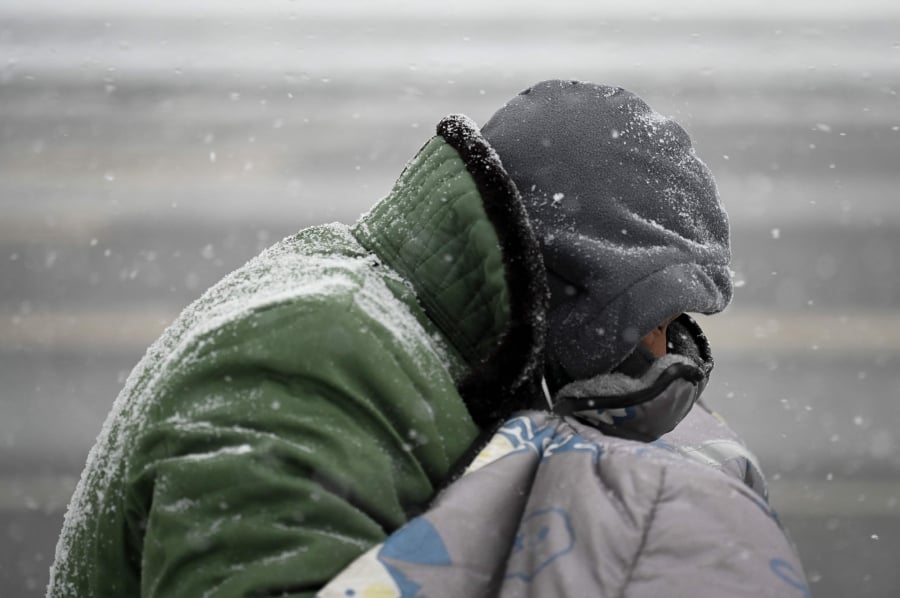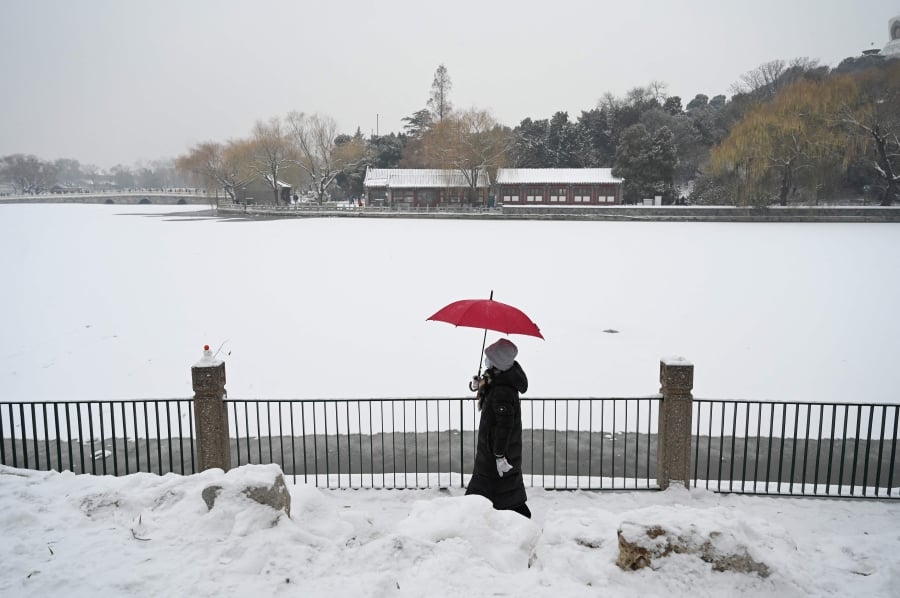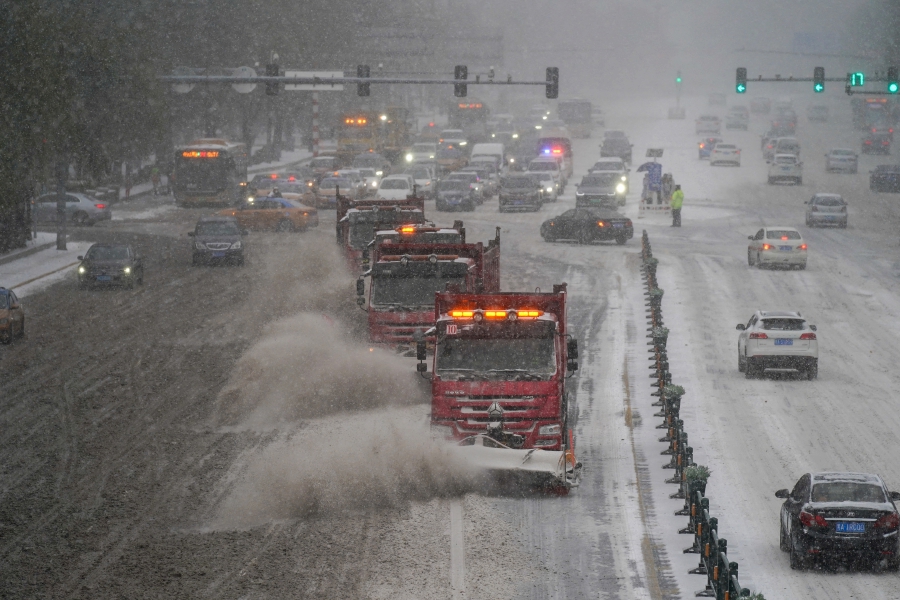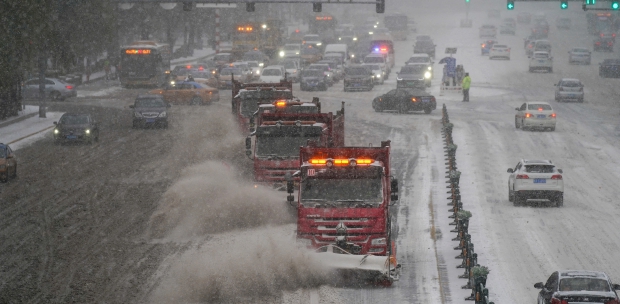BEIJING: Unseasonably cold weather and blizzards hit northeast China on Monday, forcing hundreds of flights to be rescheduled and closing schools as several cities issued heightened weather alerts and warned people to stay indoors. With snowfall of as much as 25 centimetres, over 90 per cent of expressway entrances in Jilin province had been closed as of 7 p.m. (1100GMT), state television CCTV said.
In the country's northernmost province Heilongjiang, the local railway operator halted 51 passenger lines over safety concerns.
A gymnasium in Heilongjiang's Jiamusi city collapsed, trapping three inside, according to CCTV.
State-run Jimu News said there were children at the venue at the time of the incident. It is unclear if the collapse was related to the snowfall, the report said. A rescue operation is underway.
Schools, kindergartens, and off-campus training institutions in most parts of Harbin, capital of Heilongjiang, will remain suspended on Tuesday, after they were cancelled on Monday, CCTV said.
China's national weather forecaster renewed its orange blizzard alert - the second highest tier of its color-coded warning system - at 6 p.m, as more snow is expected from Monday night to Tuesday in parts of Jilin and Heilongjiang.
Earlier on Monday, 405 flights were cancelled at Harbin Taiping International Airport, according to data from third-party travel app Flight Master.

Many flights were also cancelled in Jilin and Liaoning provinces, and in the Inner Mongolia region, Flight Master showed.
Video from a local newspaper showed travellers stranded in a railway station as heavy snow lashed Jilin's Changchun city, with some trains from the city suspended.
China's weather authority warned of a drastic drop in temperature in coming days, along with blizzards, state media reported.
"The season changed outside overnight," a netizen from Heilongjiang complained on Weibo, China's popular social media platform.
Provinces and cities upgraded weather response protocols, with heavy snowfall expected in parts of Inner Mongolia, and Hebei, Jilin and Liaoning provinces, China Daily reported.
On Monday, Inner Mongolia, and Liaoning and Jilin provinces also suspended schools.
Late on Sunday, Heilongjiang issued a red alert - the country's highest weather advisory - as cities in the province were expected to see 20 mm (0.787 inches) to 40 mm (1.575 inches) of blizzard precipitation into Monday evening, China Daily reported.

The Central Meteorological Observatory said some areas could see 8-10 cm (3.14 to 3.94 inches) of snow and temperatures in many regions would drop sharply.
In Harbin, social media video footage showed residents battling gale force winds and sliding and stumbling as they made their way down icy streets.
The cold forced governments in Beijing and Tianjin to make preparations to supply heat earlier than usual, according to city government notices.
Over the past week, northern China has experienced unseasonably odd contrasts in weather from smog to logging the second-warmest October in decades and then a sharp drop in temperatures over the weekend.
The Central Meteorological Administration said most of the northeast is expected to see temperatures dive to single digits or below freezing this week as cold air moves east and south. -- Reuters





